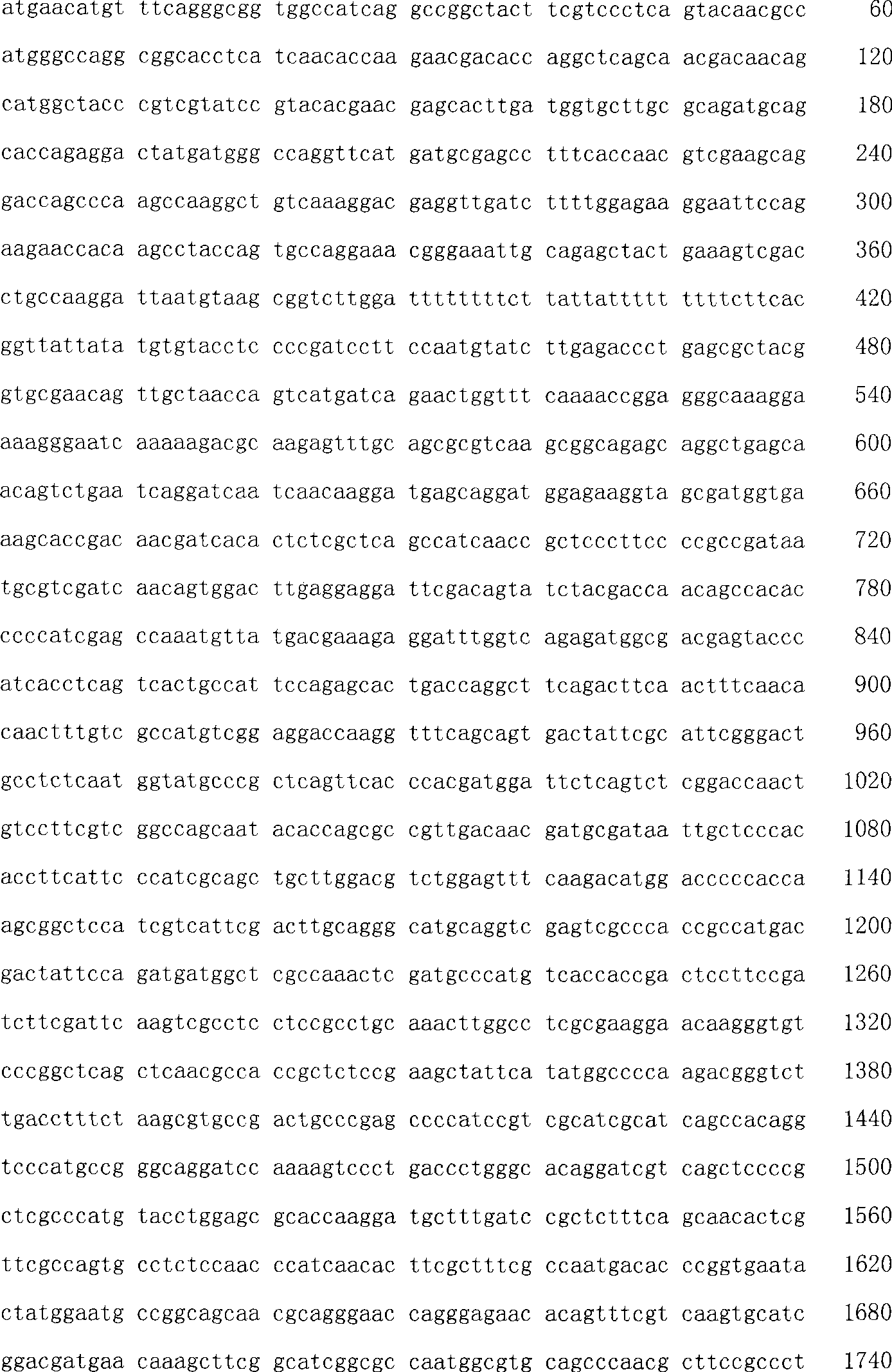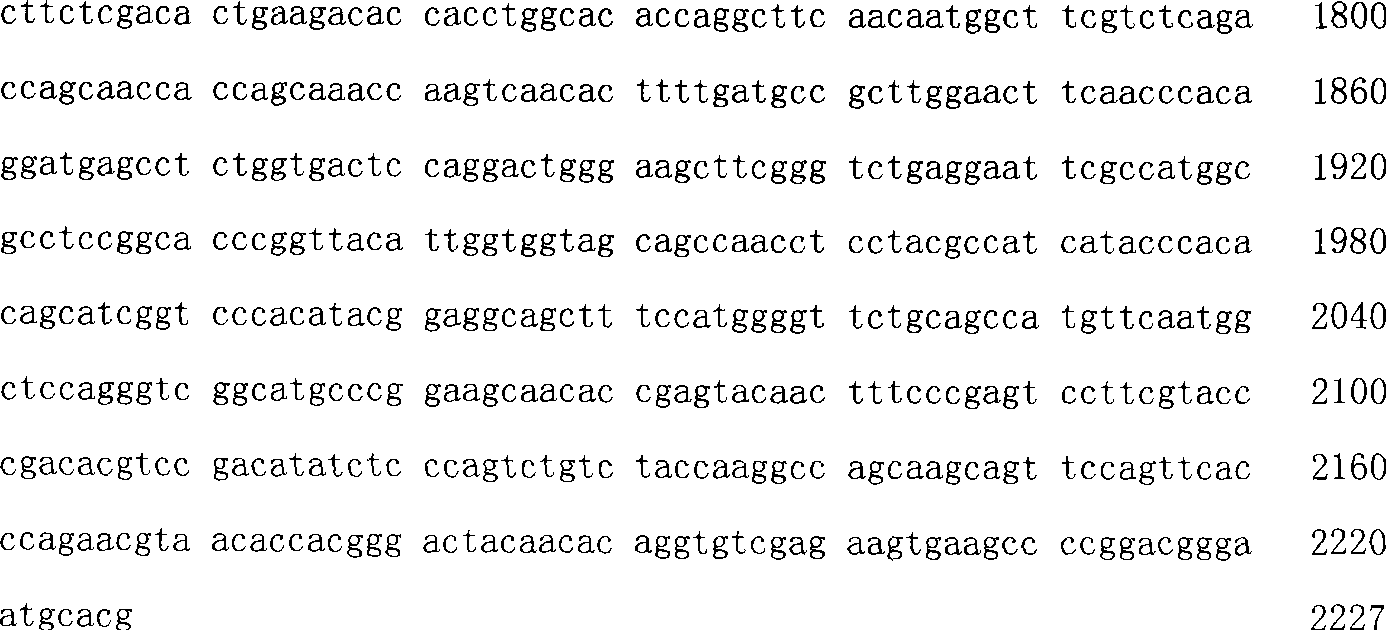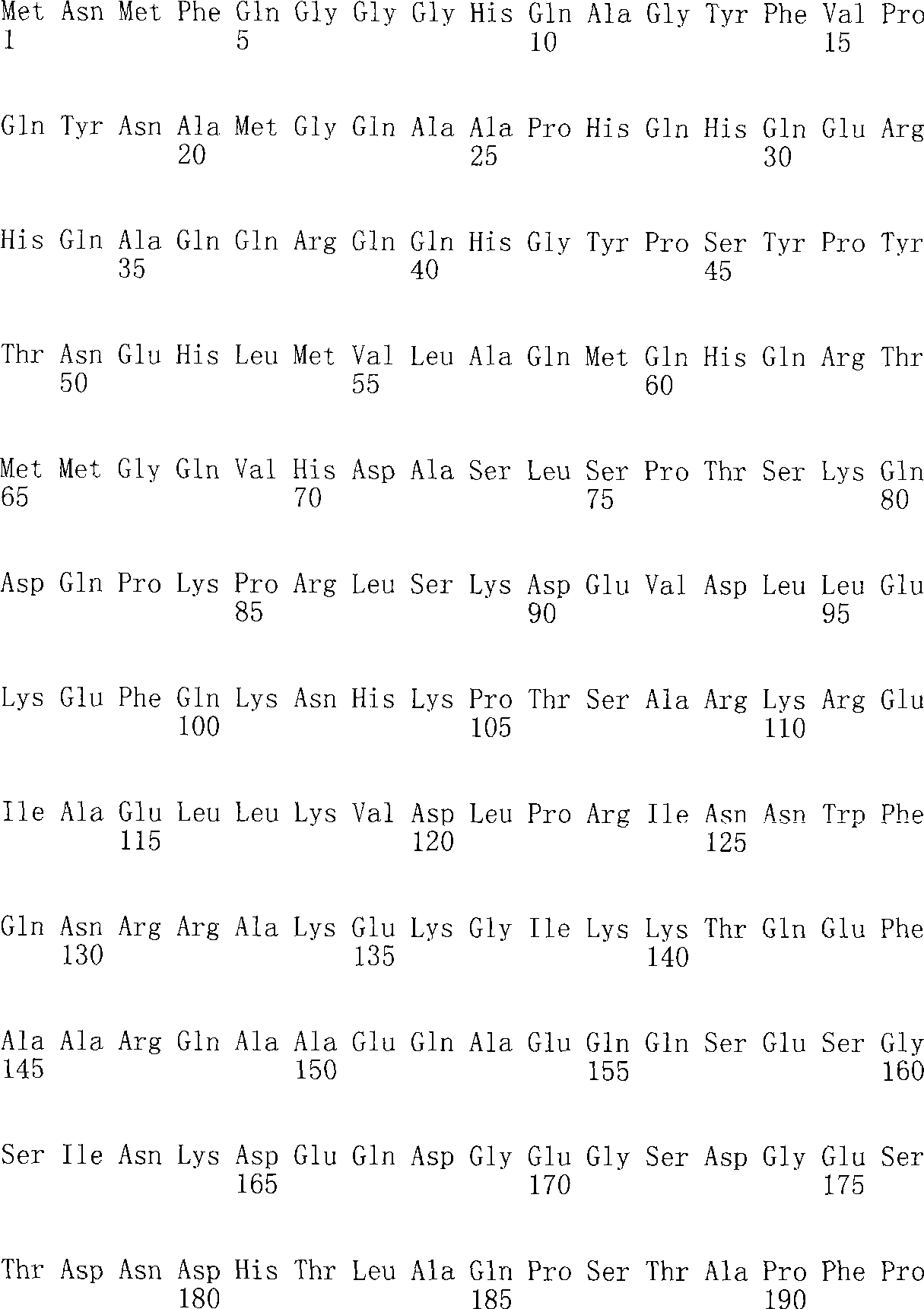Homeobox gene HTF1 capable of regulating conidium germination of Magnaporthe grisea of and use thereof
A technology of homeobox and conidia, applied in the field of genetic engineering
- Summary
- Abstract
- Description
- Claims
- Application Information
AI Technical Summary
Problems solved by technology
Method used
Image
Examples
Embodiment 1
[0012] Embodiment 1: HTF1 gene cloning and conserved domain analysis
[0013] According to the HTF1 sequence (MGG_00184.5) published in the Magnaporthe grisea genome database, gene-specific primers were designed, and the full-length sequence of HTF1 DNA was obtained by PCR amplification using the genomic DNA of the wild-type strain 70-15 of Magnaporthe grisea as a template. In addition, using 70-15 total RNA as a template, the full-length sequence of HTF1 cDNA was amplified by reverse transcription and cloned into the pGEM-T easy vector of Promega Company. The sequencing results showed that it was consistent with the sequence published in the rice blast fungus genome database. The results of Southern hybridization showed that the gene was a single-copy gene in Magnaporthe grisea. According to bioinformatics prediction, HTF1 possesses the unique domains of all homeobox proteins, that is, it contains a typical three-helix structure, and has a helix-turn-helix spatial structure b...
Embodiment 2
[0014] Example 2: HTF1 gene knockout
[0015] The invention uses a homologous recombination method to knock out the HTF1 gene. First construct the target gene knockout vector. The specific method is as follows: first, using the genomic DNA of strain 70-15 as a template, using primers 1AF: 5'-CGGAGCTCCCCAGCTATGGTCAAATCA-3', 1AR: 5'-CCCAAGCTTCCTTCTATCTCCTTTGGTCGT-3' and 1BF: 5'-CCGCTCGAGCACCACGGGACTACAACAC-3', 1BR: 5 '-GGGGTACCACCAAATGCTCGCTCACTA-3' were respectively amplified to obtain fragments on the left and right sides of the ORF of the HTF1 gene as homologous recombination homologous fragments, the sizes of which were 910bp and 810bp respectively. Fragments A and B obtained by PCR amplification were double-digested with HindIII, SacI, KpnI, and XhoI, respectively, purified and recovered, and used for the construction of a knockout vector. The construction process includes conventional enzyme digestion, ligation, transformation and further PCR and enzyme digestion verific...
Embodiment 3
[0016] Example 3: Functional complementation of HTF1 knockout mutants
[0017] In order to confirm that the abnormal growth and development of conidia of positive knockout transformants is caused by the knockout of HTF1 gene, this study used yeast homologous recombination method to construct the fusion expression vector of HTF1 gene promoter and GFP gene, At the same time, it is also the functional complement carrier of HTF1. The specific method is to first amplify from the promoter to the end of the gene, and the fragment of the terminator must be removed. The promoter is the sequence 1500 bp before the start codon of the gene. The 5' end of the primer is added with a linker more than 20 bp homologous to the front-end sequence of the GFP gene of pKB04, which is required for homologous recombination. The Advantage 2 Polymerase Mix of Clontech Company was used for amplification, and the amplified PCR fragments were gel-recovered and purified. The amplification primers are 1NF...
PUM
 Login to View More
Login to View More Abstract
Description
Claims
Application Information
 Login to View More
Login to View More - R&D
- Intellectual Property
- Life Sciences
- Materials
- Tech Scout
- Unparalleled Data Quality
- Higher Quality Content
- 60% Fewer Hallucinations
Browse by: Latest US Patents, China's latest patents, Technical Efficacy Thesaurus, Application Domain, Technology Topic, Popular Technical Reports.
© 2025 PatSnap. All rights reserved.Legal|Privacy policy|Modern Slavery Act Transparency Statement|Sitemap|About US| Contact US: help@patsnap.com



